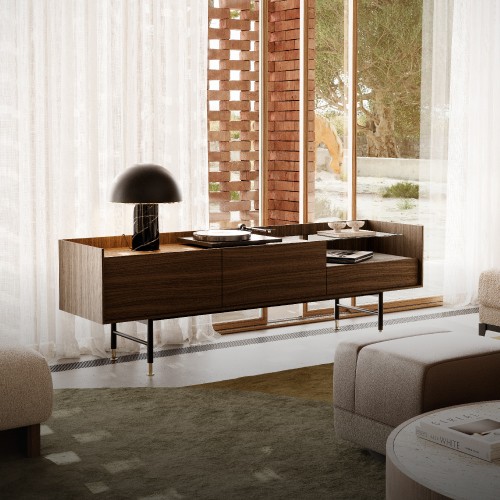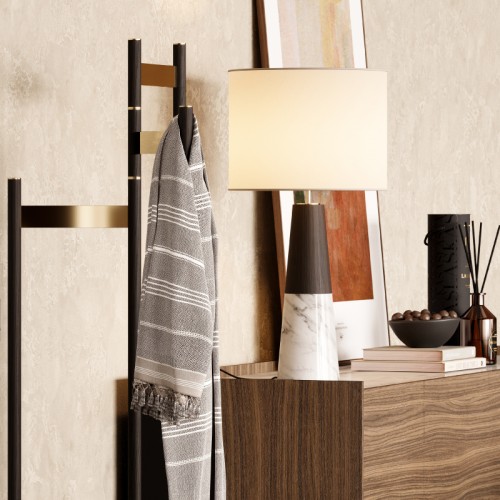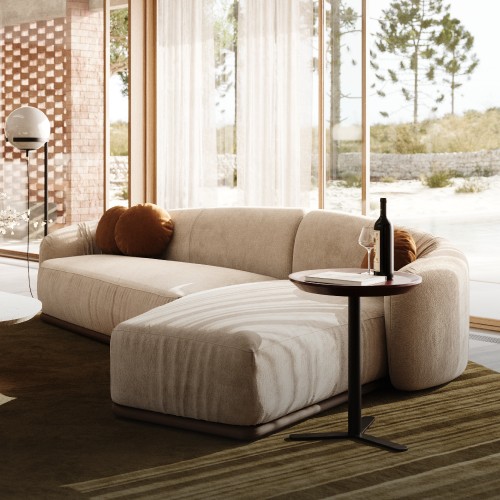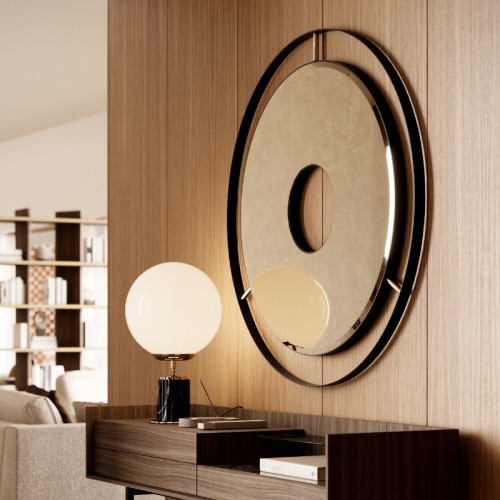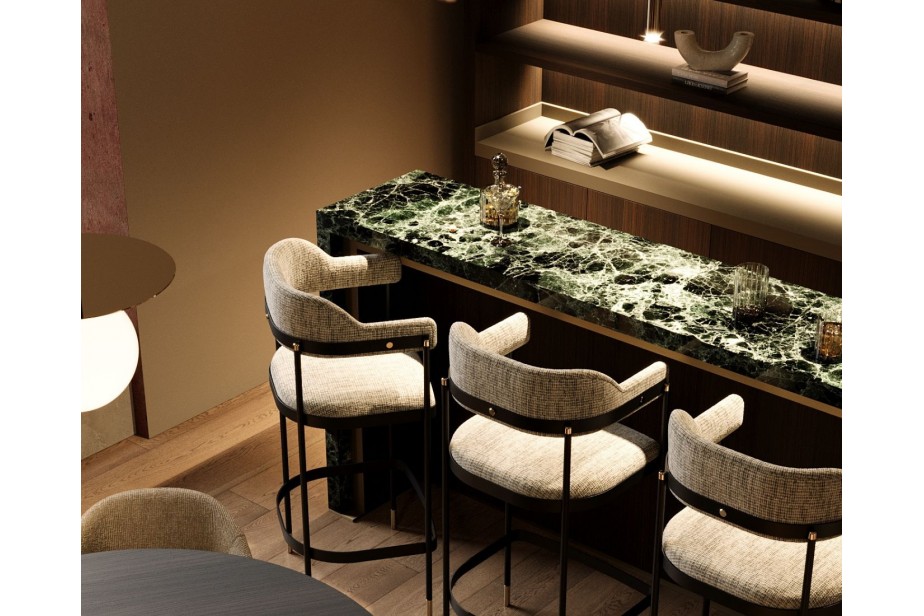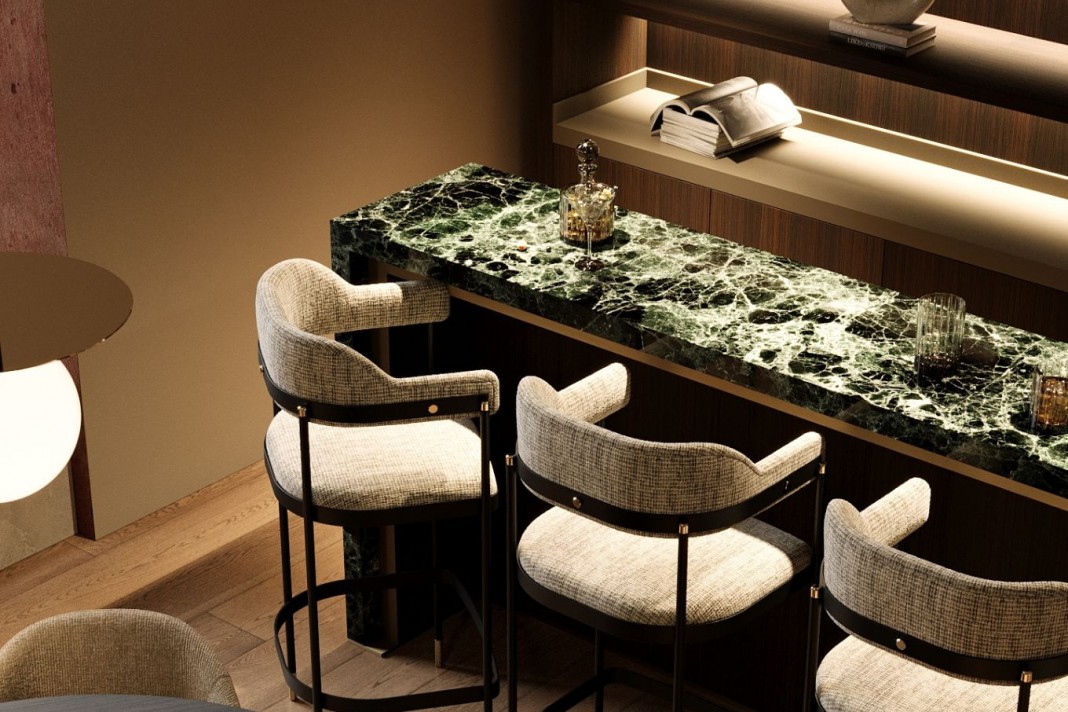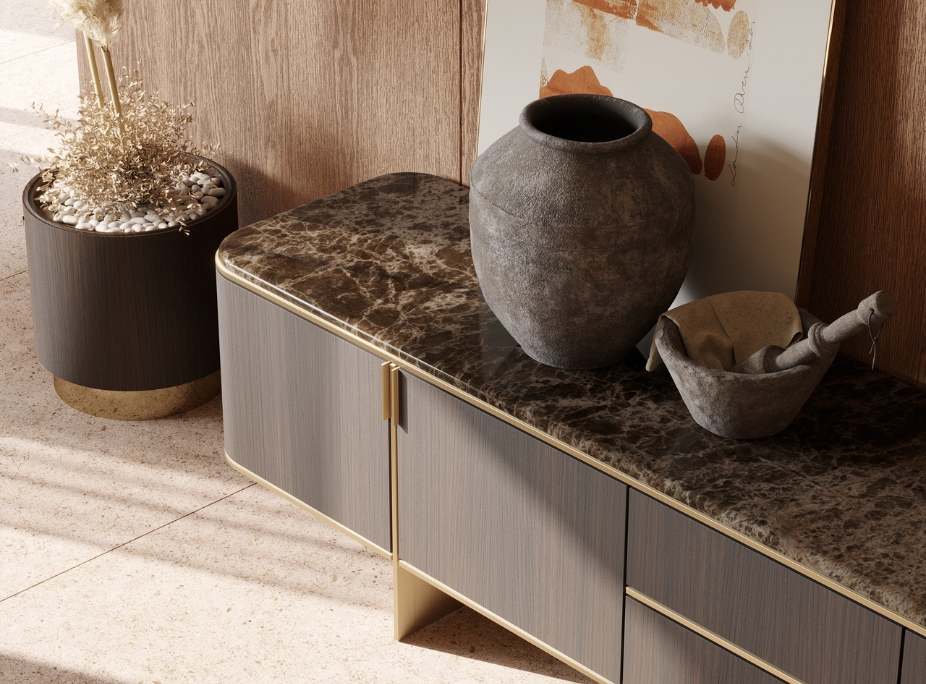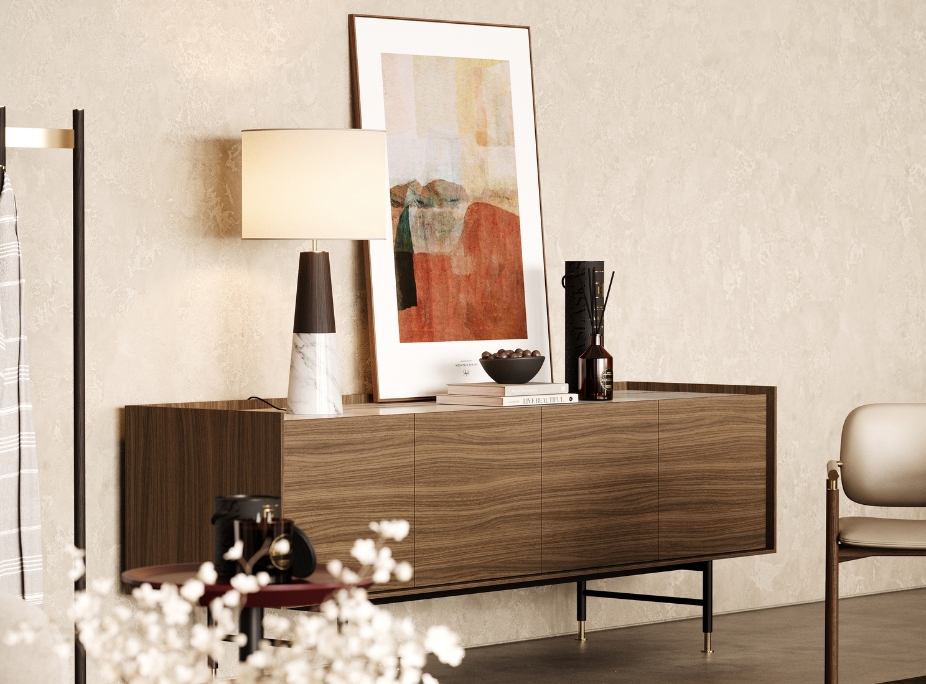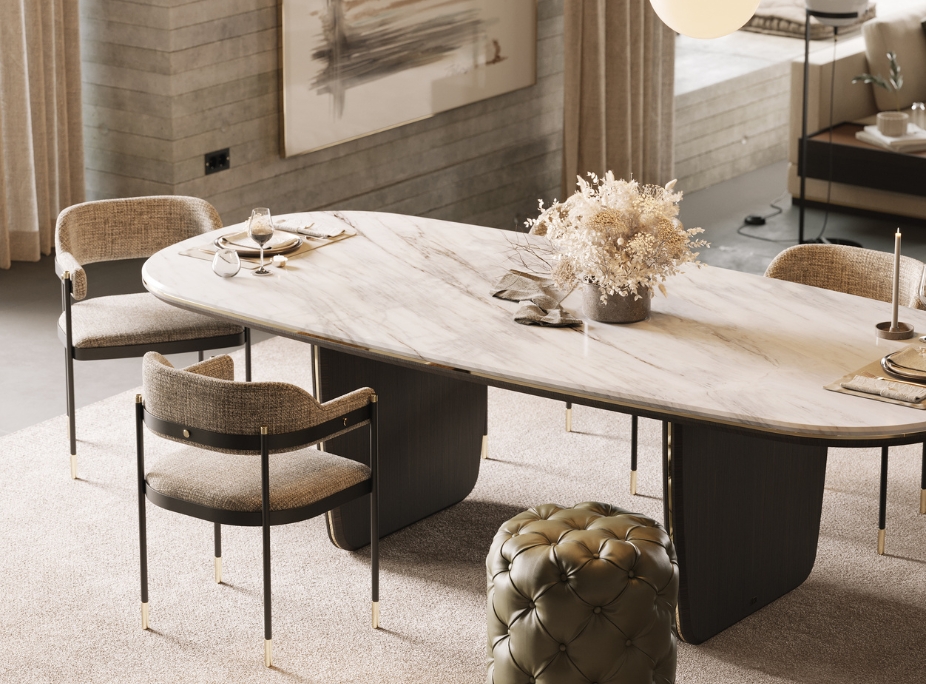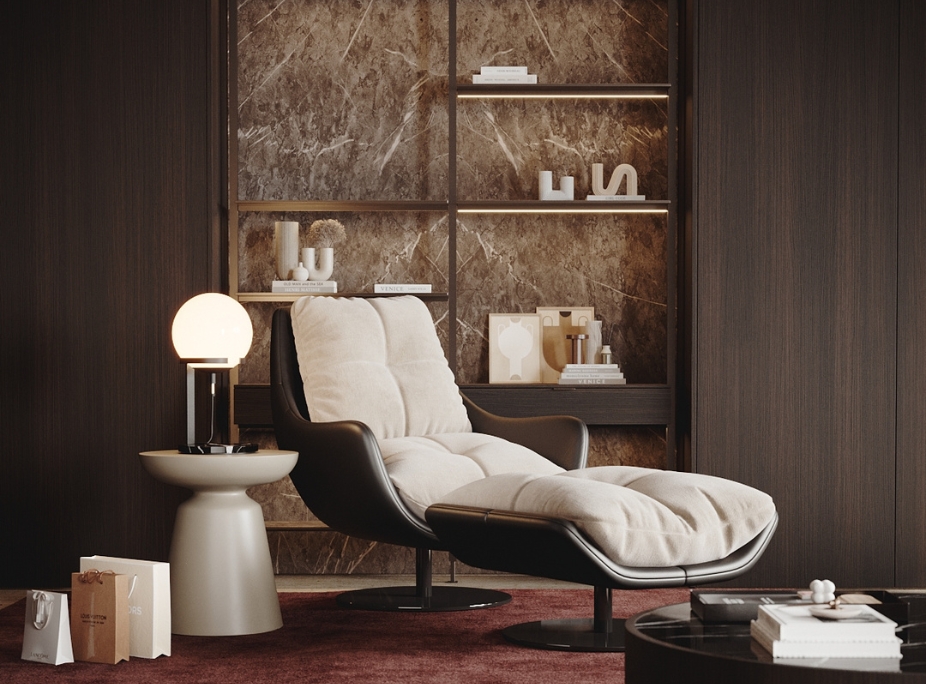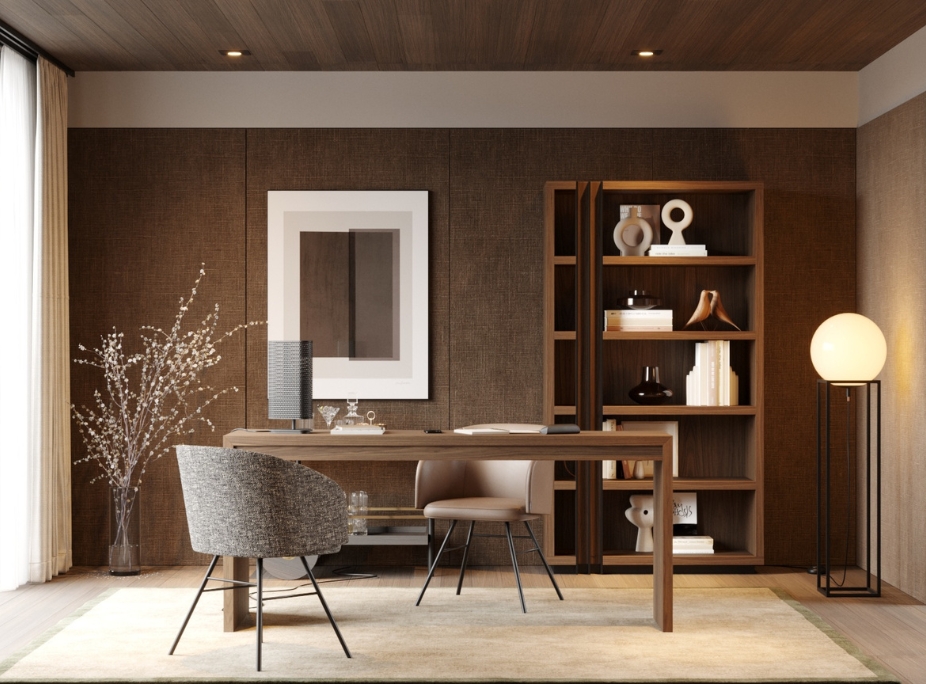Marble has long been seen as a timeless material in interior design projects —synonymous with luxury, sophistication, and value. For interior designers and architects, incorporating marble into a project is more than a stylistic choice; it’s a strategic decision that elevates the perception of quality and craftsmanship within a space. From statement furniture pieces to architectural elements and subtle accents, marble brings texture, depth, and a refined aesthetic that few other materials can match. In high-end residential and commercial environments, its presence proves attention to detail and a commitment to excellence.
In this article, we share five expert tips to help you integrate marble effectively and thoughtfully into your designs—balancing visual impact with functionality and longevity.
1. Accent with Elegance: Marble in Supporting Elements
Incorporating marble through supporting elements such as coffee tables, side tables, or TV cabinets is a smart and strategic way to introduce the material’s luxurious character without overwhelming the overall design. These accent pieces offer just the right amount of visual impact, allowing marble to shine as a refined detail rather than a dominant feature. Whether you're aiming for a classic or contemporary look, using marble in these secondary elements adds texture, sophistication, and a premium feel—elevating the space while maintaining balance and versatility across the project.
Some of Laskasas most-wanted secondary pieces with marble:
- Norman TV Cabinet: a refined retro TV cabinet that infuses living areas with a touch of 50s-inspired elegance.
- Lyssa Coffee Table: a modern round coffee table that brings together elements of both classic appeal and glamour.
- Nilo Side Table: a rectangular side table that stands out for its solid marble or wood veneer top, complemented by a wooden interior.
2. Lighting Luxury: Marble as a Luminous Accent
Marble isn’t just for surfaces and furniture—it also brings a sense of sculptural elegance to lighting design. Choosing lighting fixtures such as wall lamps or floor lamps that incorporate marble allows you to highlight the material’s natural beauty in a subtle yet striking way. The contrast between the softness of light and the solidity of stone creates a unique visual interplay, transforming functional pieces into luminous accents. For designers and architects aiming to add a refined layer to a space, marble lighting offers the perfect balance of form, function, and sophistication.
Lighting fixtures that feature marble:
- DaveWall Lamp: a modern wall sconce that combines marble and metal in a minimalist design.
- Little Jack Table Lamp: a small table lamp with a compact design that combines charm and functionality.
- Evans Floor Lamp: a minimalist floor lamp that complements contemporary living rooms, bedrooms or hallways.
3. Make a Statement: Marble in Dining Tables
Few elements command attention in a space like a marble dining table. As a primary furniture piece, it acts as both a functional feature and a bold design statement, instantly elevating the room with its natural elegance and distinctive veining. Choosing marble for a dining table is a powerful way to highlight craftsmanship and material quality, setting a refined tone for the entire interior. Whether paired with minimalist lines or more sculptural bases, a marble tabletop offers timeless sophistication—making it an ideal choice for high-end residential or hospitality projects that aim to impress.
Some of Laskasas dining table with marble tops:
- Jeane Dining Table: perfect for interior designers seeking to elevate the atmosphere with a touch of contemporary flair.
— Ponza Dining Table: a perfect modern addition to your living room, as it adds an edge of style and elegance to any space.
- Marilyn Dining Table: a captivating round dining table with a lazy Susan, designed to be the centrepiece of any high-end dining room.
4. Built-In Beauty: Marble in Architectural Features
Incorporating marble into architectural features is one of the most impactful ways to infuse a space with lasting elegance. From fireplace surrounds and wall cladding to flooring and integrated shelving, marble used in built-in elements becomes a defining part of the environment’s character. These applications go beyond decorative accents—marble becomes part of the structure, adding both visual and material weight to the design. For interior designers and architects, choosing marble for architectural features is a powerful solution that communicates luxury, and meticulous attention to detail.
5. Sculpted Elegance: Marble in Decorative Accessories
Incorporating marble into smaller accessories and design details is a brilliant way to add sophistication without overpowering a space. Items like marble vases, trays, sculptures, and even drawer pulls can seamlessly complement other materials while introducing the timeless elegance of marble. These subtle accents offer a refined, cohesive look that ties together different elements of a room. By choosing marble for these decorative touches, designers can create a sense of luxury and continuity throughout the space, ensuring that every detail, no matter how small, contributes to the overall aesthetic.
